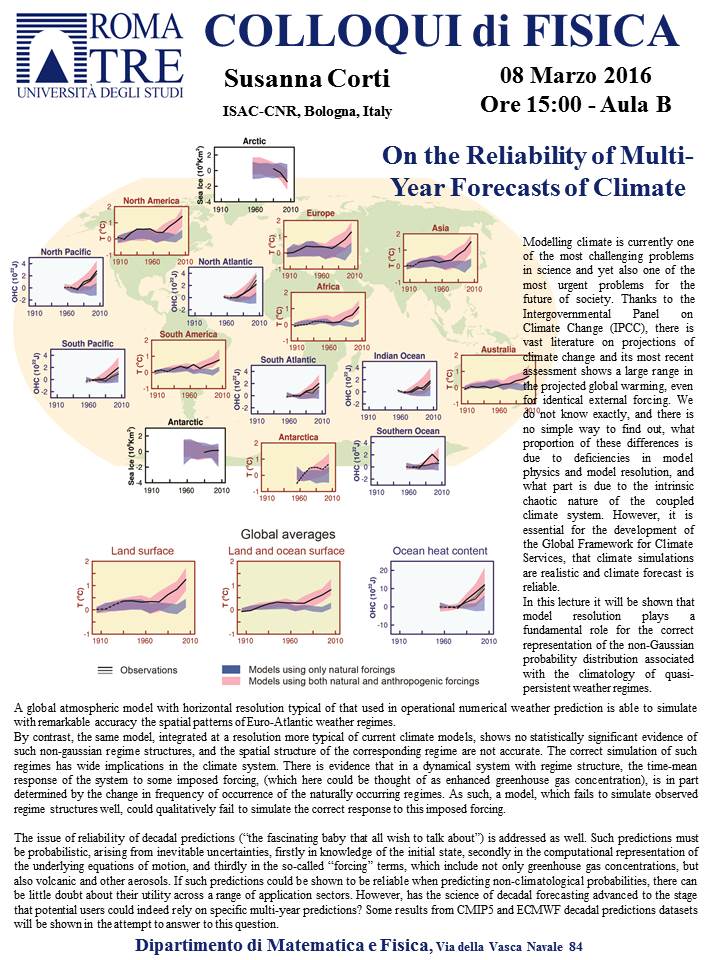
Attività del Dipartimento
Colloqui di Fisica On the Reliability of Multi-Year Forecasts of Climate Susanna Corti 08-03-2016 - 15:00 AULA B - Via Della Vasca Navale 84
Modelling climate is currently one of the most challenging problems in science and yet also one of the most urgent problems for the future of society. Thanks to the Intergovernmental Panel on Climate Change (IPCC), there is vast literature on projections of climate change and its most recent assessment shows a large range in the projected global warming, even for identical external forcing. We do not know exactly, and there is no simple way to find out, what proportion of these differences is due to deficiencies in model physics and model resolution, and what part is due to the intrinsic chaotic nature of the coupled climate system. However, it is essential for the development of the Global Framework for Climate Services, that climate simulations are realistic and climate forecast is reliable.
In this lecture it will be shown that model resolution plays a fundamental role for the correct representation of the non-Gaussian probability distribution associated with the climatology of quasi-persistent weather regimes. A global atmospheric model with horizontal resolution typical of that used in operational numerical weather prediction is able to simulate with remarkable accuracy the spatial patterns of Euro-Atlantic weather regimes. By contrast, the same model, integrated at a resolution more typical of current climate models, shows no statistically significant evidence of such non-gaussian regime structures, and the spatial structure of the corresponding regime are not accurate. The correct simulation of such regimes has wide implications in the climate system. There is evidence that in a dynamical system with regime structure, the time-mean response of the system to some imposed forcing, (which here could be thought of as enhanced greenhouse gas concentration), is in part determined by the change in frequency of occurrence of the naturally occurring regimes. As such, a model, which fails to simulate observed regime structures well, could qualitatively fail to simulate the correct response to this imposed forcing. The issue of reliability of decadal predictions (“the fascinating baby that all wish to talk about”) is addressed as well. Such predictions must be probabilistic, arising from inevitable uncertainties, firstly in knowledge of the initial state, secondly in the computational representation of the underlying equations of motion, and thirdly in the so-called “forcing” terms, which include not only greenhouse gas concentrations, but also volcanic and other aerosols. If such predictions could be shown to be reliable when predicting non-climatological probabilities, there can be little doubt about their utility across a range of application sectors. However, has the science of decadal forecasting advanced to the stage that potential users could indeed rely on specific multi-year predictions? Some results from CMIP5 and ECMWF decadal predictions datasets will be shown in the attempt to answer to this question. org: MARI Stefano Maria Allegati: [Locandina] |



